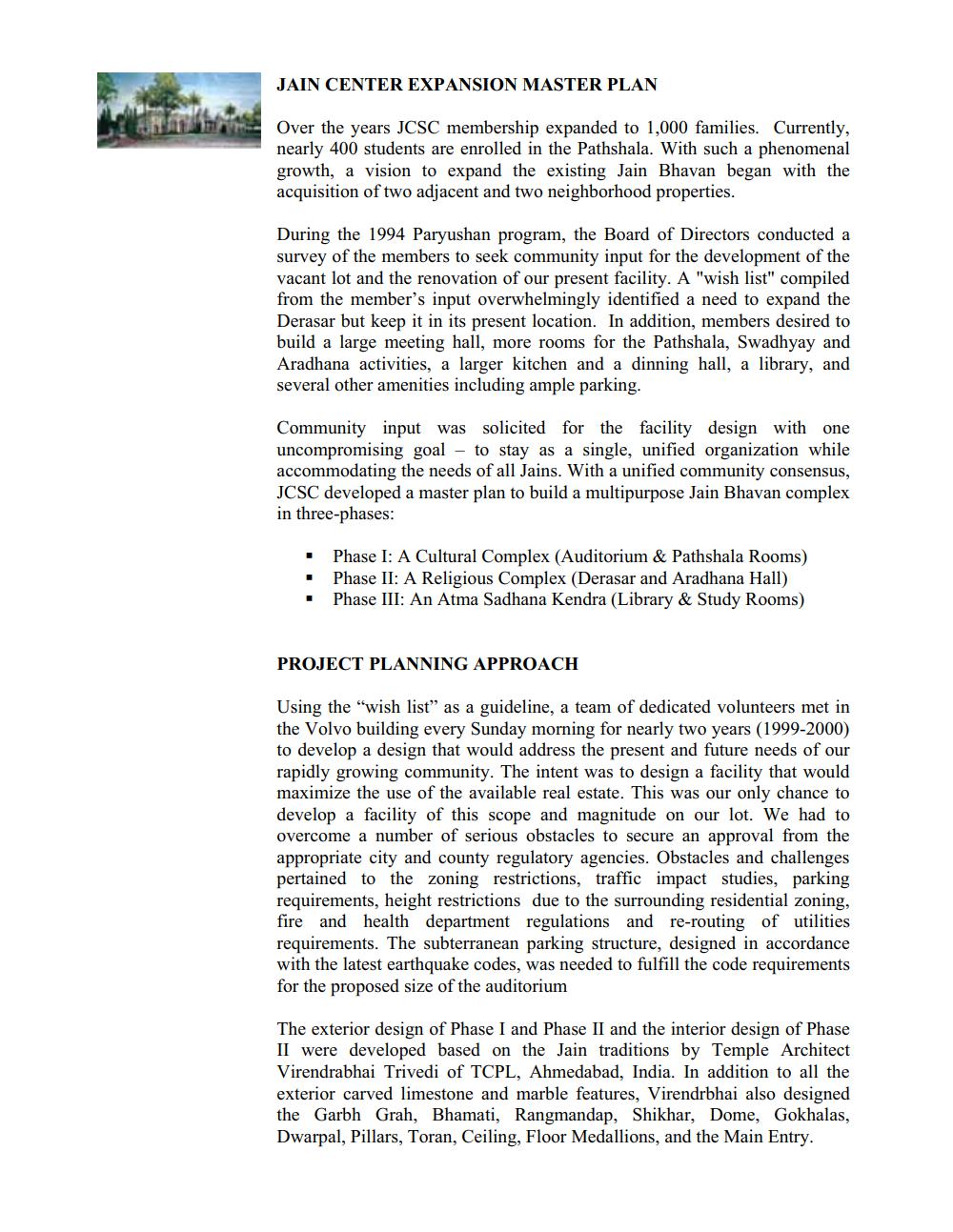________________
JAIN CENTER EXPANSION MASTER PLAN
Over the years JCSC membership expanded to 1,000 families. Currently, nearly 400 students are enrolled in the Pathshala. With such a phenomenal growth, a vision to expand the existing Jain Bhavan began with the acquisition of two adjacent and two neighborhood properties.
During the 1994 Paryushan program, the Board of Directors conducted a survey of the members to seek community input for the development of the vacant lot and the renovation of our present facility. A "wish list" compiled from the member's input overwhelmingly identified a need to expand the Derasar but keep it in its present location. In addition, members desired to build a large meeting hall, more rooms for the Pathshala, Swadhyay and Aradhana activities, a larger kitchen and a dinning hall, a library, and several other amenities including ample parking.
Community input was solicited for the facility design with one uncompromising goal – to stay as a single, unified organization while accommodating the needs of all Jains. With a unified community consensus, JCSC developed a master plan to build a multipurpose Jain Bhavan complex in three-phases:
•
Phase I: A Cultural Complex (Auditorium & Pathshala Rooms) Phase II: A Religious Complex (Derasar and Aradhana Hall) Phase III: An Atma Sadhana Kendra (Library & Study Rooms)
PROJECT PLANNING APPROACH
Using the "wish list" as a guideline, a team of dedicated volunteers met in the Volvo building every Sunday morning for nearly two years (1999-2000) to develop a design that would address the present and future needs of our rapidly growing community. The intent was to design a facility that would maximize the use of the available real estate. This was our only chance to develop a facility of this scope and magnitude on our lot. We had to overcome a number of serious obstacles to secure an approval from the appropriate city and county regulatory agencies. Obstacles and challenges pertained to the zoning restrictions, traffic impact studies, parking requirements, height restrictions due to the surrounding residential zoning, fire and health department regulations and re-routing of utilities requirements. The subterranean parking structure, designed in accordance with the latest earthquake codes, was needed to fulfill the code requirements for the proposed size of the auditorium
The exterior design of Phase I and Phase II and the interior design of Phase II were developed based on the Jain traditions by Temple Architect Virendrabhai Trivedi of TCPL, Ahmedabad, India. In addition to all the exterior carved limestone and marble features, Virendrbhai also designed the Garbh Grah, Bhamati, Rangmandap, Shikhar, Dome, Gokhalas, Dwarpal, Pillars, Toran, Ceiling, Floor Medallions, and the Main Entry.




